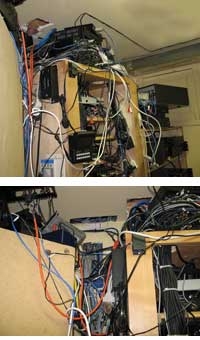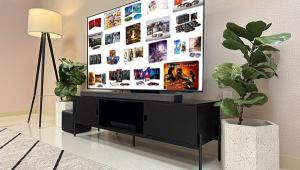Danger Zones: Protecting Your Gear from Natural Disasters Page 5
 HUMAN ERROR One hazard we're all exposed to, regardless of where we live, is bad installation work. If you're about to do some work on an existing installation, proceed carefully.
HUMAN ERROR One hazard we're all exposed to, regardless of where we live, is bad installation work. If you're about to do some work on an existing installation, proceed carefully.
I recently upgraded a beautiful log cabin (if you can call a 7,500-square-foot house a cabin). After unplugging and removing all the gear in the main closet, I proceeded to prune the cable shrub coming out of the wall. After cutting away about 4 pounds of electrical tape, I trimmed the cable to prepare for a clean patch panel. But as I was removing the cascade of wire, I created some sparks that damaged my cable cutters. After a little investigation, I found that one of the Cat-3 wires (commonly used for sending data through phone systems and home networks) was carrying 120-volt power - something it was obviously never meant to do. After muttering a few choice comments about the previous installers, I found five more low-voltage wires hot with 120-volt power.
This is a dramatic example of a bad installation, but it's far from an isolated one. Just because you're paying somebody to do a job doesn't mean he's a pro. It's up to you to get references before you hire anyone and to inspect all the work once it's done.
Sean Greer is the owner of and senior design engineer at Experience AV Home Theater (ExperienceAV.com) in mountainous Montrose, Colorado.
The Custom Installer: Preparing for a Disaster Back to Homepage What's New on S&V




























































